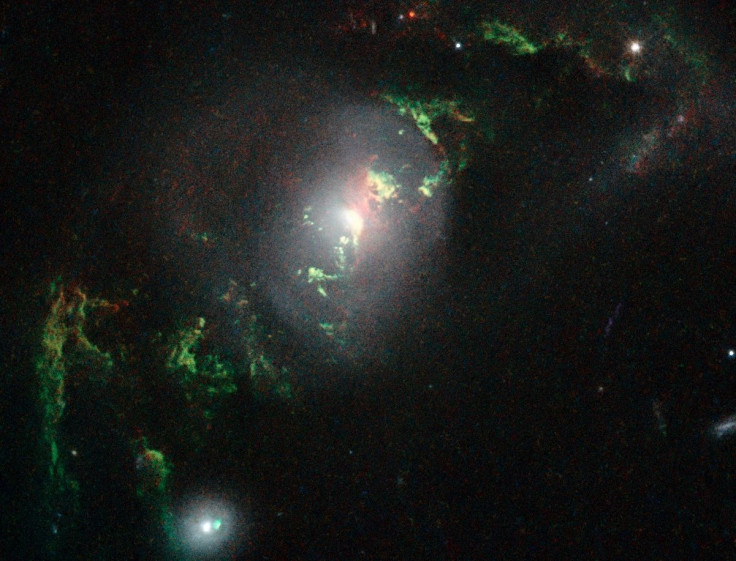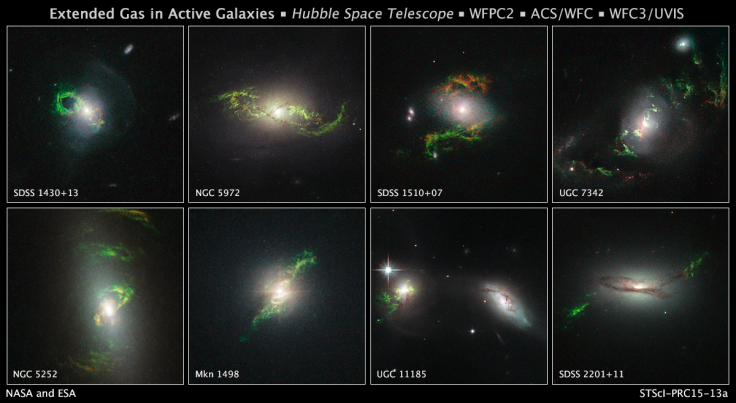NASA’s Hubble Detects Green Ghostly Structures Near Dead Quasars

NASA’s Hubble space telescope has captured images of a set of thin, green objects, which astronomers have identified as the short-lived ghosts of quasars -- extremely bright masses of energy and light -- that flickered to life and then faded away. Scientists expect the new findings to help them better understand the baffling behavior of galaxies with energetic cores.
The Hubble images showed that the glowing structures have looping, helical, and braided shapes. According to astronomers, these “phantom” wispy structures outside the host galaxy could have been illuminated by powerful ultraviolet radiation from a supermassive black hole at the center of the host galaxy. The most active of these galaxy cores are called quasars, which shine material heated to a point that sends a bright beam into deep space.
“However, the quasars are not bright enough now to account for what we’re seeing; this is a record of something that happened in the past,” Bill Keel of the University of Alabama, Tuscaloosa, who initiated the Hubble survey, said in a statement.

According to scientists, the quasar beam caused invisible filaments in deep space to glow through a process called “photoionization,” in which oxygen atoms in the filaments absorb light from the quasar and re-emit it over many thousands of years. Other elements present in the filaments include hydrogen, helium, nitrogen, sulfur and neon.
As for the green filaments, the astronomers believe them to be long tails of gas disintegrated under gravitational forces when two galaxies merged. These mysterious strictures -- tens of thousands of light-years old -- did not emerge from the quasar’s black hole, but are slowly orbiting their host galaxy, long after the merger was completed.
“We see these twisting dust lanes connecting to the gas, and there's a mathematical model for how that material wraps around in the galaxy,” Keel said in the statement. Potentially, you can say we're seeing it 1.5 billion years after a smaller gas-rich galaxy fell into a bigger galaxy.”
Because of their distance from the host galaxy, the ghostly green structures might have taken tens of thousands of years to light up after the quasar outburst, and would likely fade tens of thousands of years after the quasar itself comes to an end, according to astronomers.
© Copyright IBTimes 2024. All rights reserved.





















